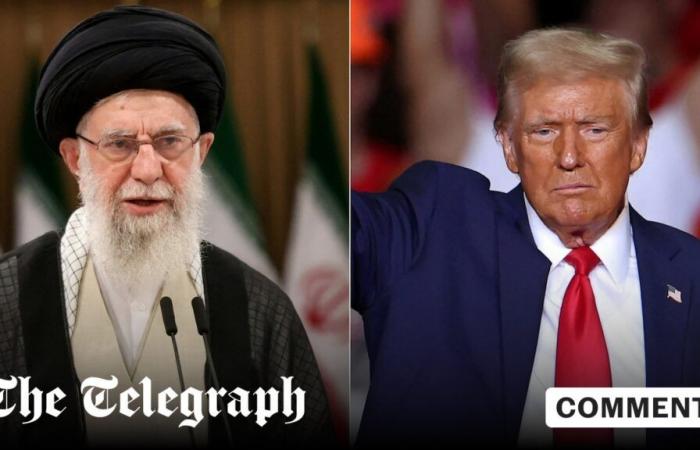Since Donald Trump was re-elected as US president, the Left in the US and Europe have gone into meltdown. But nobody will feel a greater sense of foreboding than the leadership of the West’s enemies in Moscow, Beijing and Tehran.
Most immediately, the return of Trump is Iran’s worst nightmare. The ayatollahs have enjoyed four years of financial and political benefits from Joe Biden’s policies of appeasement, which saw billions of dollars of frozen assets released, empowering Tehran on the world stage. Why else would Supreme Leader Ali Khamenei have allowed or even ordered his terrorist proxies Hamas and Hezbollah to so viciously assault Israel in October last year, if he did not feel confident that a craven US administration would let him get away with it?
The Trump years were very different. As President, Trump had trashed Barack Obama’s irrational nuclear deal and piled on economic sanctions. He went on to order the elimination of Qasem Soleimani, chief of the Islamic Revolutionary Guard Corps Quds Force, the organisation responsible for terrorism across the Middle East and around the world. Trump’s return to the White House therefore represented a clear and present threat to the continuation of the regime in Tehran.
The Supreme Leader couldn’t tolerate the return of his nemesis to the White House, and that is why the regime ordered Trump’s assassination in September. On Friday, the Department of Justice revealed charges against an Afghan immigrant to the US, Farhad Shakeri, who was allegedly tasked by the IRGC to murder the then US presidential candidate.
There is no question that Khamanei and the IRGC meant business. The regime has successfully carried out multiple political assassinations since it came to power in 1979, and has attempted to murder many others.
On its own, Iran’s intent to assassinate Donald Trump is a the casualty of wardemanding the decapitation of the regime. But Tehran’s aggression goes beyond even that. In the last year alone, Iran’s proxies have carried out almost 200 attacks against US forces in Iraq, Syria and Jordan. On 7 October last year, more than 40 Americans living in Israel were murdered by Iranian proxies and 12 kidnapped, some of whom are still held hostage. Trump has warned Hamas and their Iranian sponsors: “We want our hostages back, and they better be back before I assume office, or you will be paying a very big price”.
This suggests that, when Trump re-enters the White House, Washington’s protection of Iran will come to a dramatic end. It is vital for the Middle East and the West that it does. Thanks to Obama’s nuclear deal and Biden’s appeasement, Tehran is now on the cusp of becoming a nuclear armed state. It is believed to have sufficient highly enriched uranium to manufacture at least ten nuclear weapons and the ability to deliver them by ballistic missiles, and may be about to gain the capability for weaponisation.
Prior to the recent Israeli response to Iran’s October missile attacks on its territory, Biden pronounced targeting of Tehran’s nuclear capabilities off-limits. Conversely, Trump said that Israel should “hit the nuclear first and worry about everything else later”. Whatever action Trump decides the US should directly take against Iran, he should remove all the shackles Biden has clapped on Israel. Not only should he unequivocally support whatever action Jerusalem needs to take to defend itself from this threat, he should equip it with whatever military resources it needs to effectively destroy the Iranian nuclear programme.
Such a move should be fully backed by the West, including the UK. Sir Keir Starmer, whose government has ground to make up in its relations with the future Trump administration, could secure an easy win now by proscribing as a terrorist organisation the IRGC, would-be assassins of its number one ally’s president-elect.






